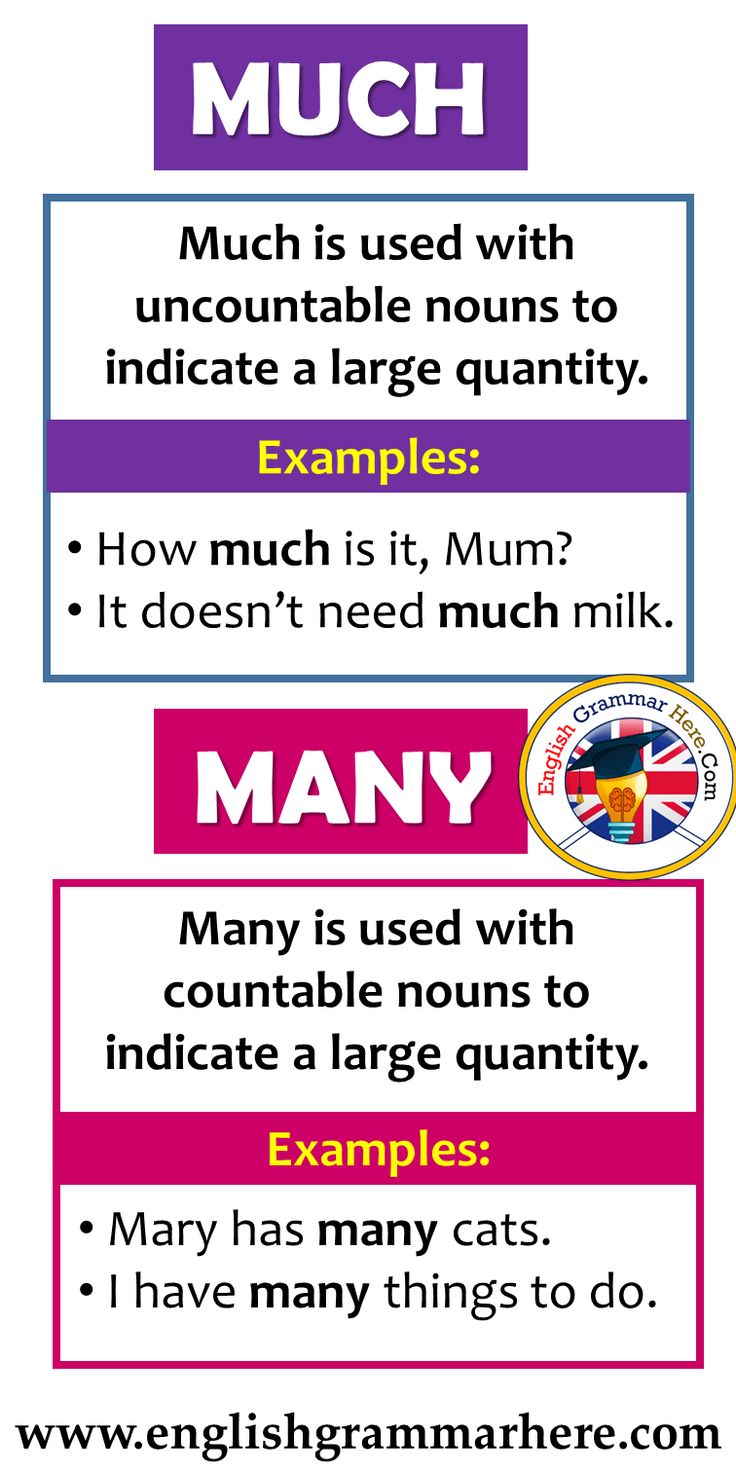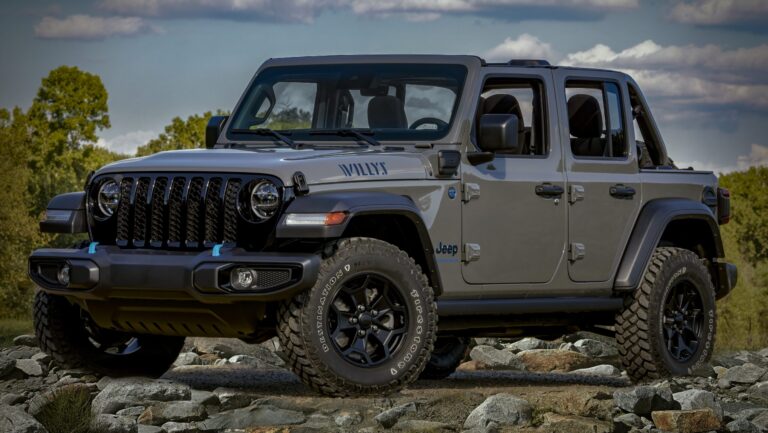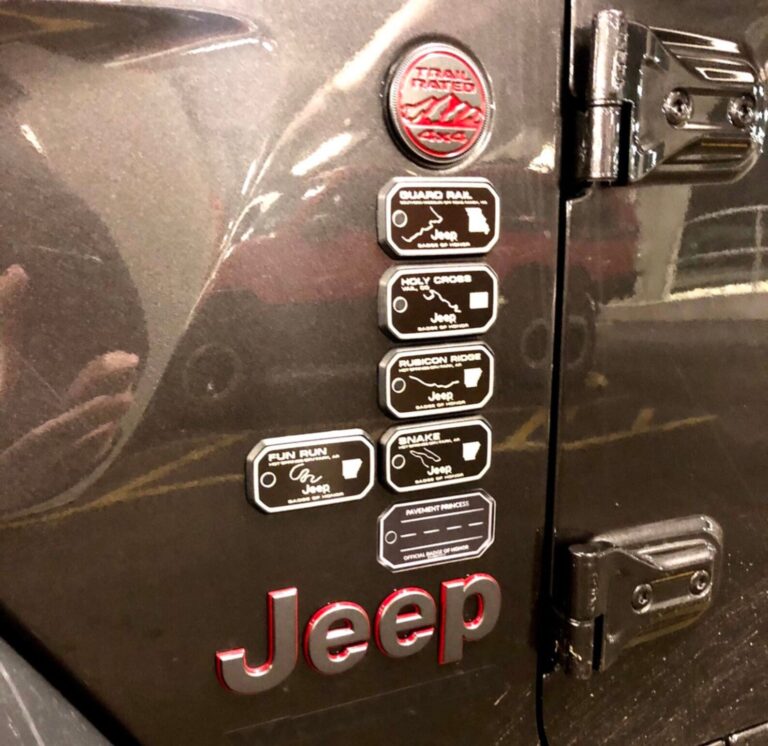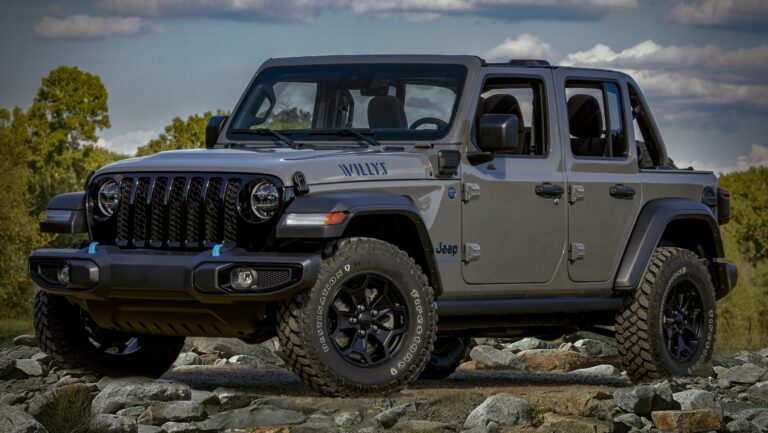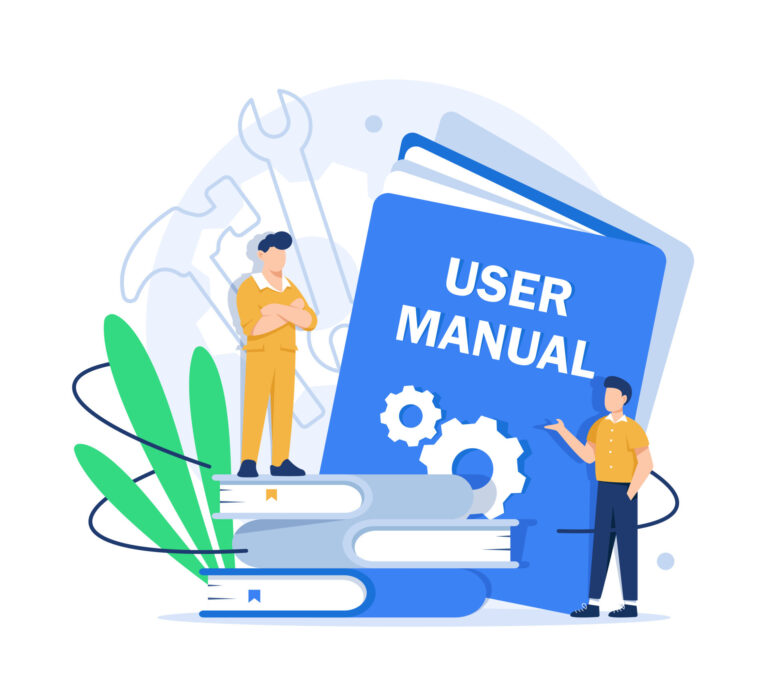How Much Does The Jeep Wrangler Cost?
How Much Does The Jeep Wrangler Cost? jeeps.truckstrend.com
The Jeep Wrangler stands as an icon, a symbol of adventure, freedom, and unparalleled off-road capability. For decades, it has captivated enthusiasts and casual drivers alike with its distinctive look, removable doors and roof, and legendary go-anywhere attitude. But for many aspiring owners, the burning question remains: "How much does the Jeep Wrangler truly cost?"
Understanding the price of a Jeep Wrangler is far more nuanced than simply looking up a single number. It involves considering various trim levels, optional features, engine choices, the allure of hybrid technology, the dynamics of the used market, and the often-overlooked ongoing costs of ownership. This comprehensive guide will meticulously break down the financial aspects of acquiring and maintaining a Jeep Wrangler, empowering you with the knowledge to make an informed decision about this remarkable vehicle.
How Much Does The Jeep Wrangler Cost?
The Starting Point: MSRP by Trim Level (New Models)
The Manufacturer’s Suggested Retail Price (MSRP) is the initial benchmark for new Jeep Wranglers. It represents the base cost of each specific trim level before any options, packages, destination charges, taxes, or dealer markups. The Wrangler lineup is diverse, offering a range of trims designed to cater to different budgets and intended uses, from the more basic adventure-seeker to the ultimate off-road powerhouse.
Here’s a breakdown of the typical starting MSRPs for the current generation (JL) Jeep Wrangler models (prices are approximate and subject to change based on model year updates, region, and market conditions):
-
Wrangler Sport: This is the entry-level trim, offering the quintessential Wrangler experience without many frills. It’s perfect for those who want the classic look and capability at the most accessible price point.
- Estimated Starting MSRP (2-Door): $32,000 – $34,000
- Estimated Starting MSRP (4-Door Sport S): $36,000 – $38,000

-
Wrangler Willys: Building on the Sport, the Willys trim adds a touch of heritage and enhanced off-road features like larger tires, a limited-slip rear differential, and unique styling elements.

- Estimated Starting MSRP: $37,000 – $40,000

Wrangler Sahara: Positioned as the more premium, on-road oriented trim, the Sahara offers a more refined interior, larger wheels, body-color fender flares, and advanced technology features. It’s ideal for those who split their time between urban driving and light trails.
- Estimated Starting MSRP: $44,000 – $47,000
-
Wrangler Rubicon: The legendary Rubicon is purpose-built for extreme off-roading. It boasts heavy-duty axles, electronic locking differentials, a disconnecting sway bar, and a lower transfer case gear ratio for ultimate rock crawling. This is where the price significantly jumps due to its specialized hardware.
- Estimated Starting MSRP: $48,000 – $51,000
-
Wrangler High Altitude: This trim takes the Sahara’s premium feel to the next level with exclusive exterior styling, body-color bumpers, quilted Nappa leather seats, and a host of advanced technology and safety features. It’s the most luxurious of the non-392 trims.
- Estimated Starting MSRP: $55,000 – $58,000
-
Wrangler Rubicon 392: The pinnacle of Wrangler performance, the Rubicon 392 packs a monstrous 6.4-liter HEMI V8 engine, delivering exhilarating power and sound. It’s designed for high-speed off-roading and boasts premium features, making it the most expensive Wrangler by a significant margin.
- Estimated Starting MSRP: $85,000 – $90,000+
It’s important to note that 4-door models (Unlimited) generally carry a higher MSRP than their 2-door counterparts due to increased size, utility, and materials.
Beyond the Sticker Price: Understanding Optional Features and Packages
While the trim level sets the foundation, the final price of a new Jeep Wrangler can escalate considerably with the addition of optional features and packages. These add-ons cater to specific preferences for performance, comfort, technology, and aesthetics.
Key optional features and packages that influence the cost include:
- Engine Upgrades: Beyond the standard 3.6L Pentastar V6, options often include the more fuel-efficient 2.0L turbocharged inline-four, the robust 3.0L EcoDiesel V6 (though discontinued for new orders, still relevant for existing inventory), and of course, the potent 6.4L HEMI V8 in the Rubicon 392. Each engine upgrade carries a premium.
- Transmission Choices: While manual transmissions are standard on some trims, opting for the smooth 8-speed automatic transmission adds to the cost.
- Roof Configurations: The standard soft top can be upgraded to various hardtop options (black, body-color), power soft tops (Sky One-Touch Power Top), or dual-top groups (combining hard and soft tops), each adding hundreds to thousands of dollars.
- Technology Packages: Upgraded infotainment systems (Uconnect with larger screens), premium audio systems (Alpine), integrated navigation, and advanced safety features (blind-spot monitoring, rear cross-path detection, adaptive cruise control) are often bundled into packages that increase the price.
- Off-Road Enhancements: Specific off-road packages might include upgraded suspension, heavy-duty electrical groups, auxiliary switches, or specialized tire and wheel combinations.
- Appearance Packages: These can include unique wheel designs, exterior graphics, special paint colors (especially premium metallic or unique shades), and interior accents.
- Cold Weather Group: Features like heated seats, a heated steering wheel, and remote start are popular additions.
- Trailer Tow and Heavy-Duty Electrical Group: Essential for those planning to tow, this package adds a hitch receiver and robust electrical components.
Each selected option contributes to the final MSRP, turning a base Sport model into a significantly more expensive, highly customized vehicle.
The 4xe Factor: Hybrid Technology and its Cost Implications
The introduction of the Wrangler 4xe (pronounced "four by E") marked a significant leap into hybrid technology for Jeep. This Plug-in Hybrid Electric Vehicle (PHEV) combines the 2.0L turbocharged engine with two electric motors and a 17 kWh battery pack, offering impressive torque, silent electric-only off-roading, and improved fuel efficiency.
-
Higher Initial MSRP: Wrangler 4xe models typically start at a higher price point than their equivalent gasoline-powered trims. For instance, a Sahara 4xe will be considerably more expensive than a gasoline Sahara.
- Estimated Starting MSRP (Sahara 4xe): $50,000 – $53,000
- Estimated Starting MSRP (Rubicon 4xe): $55,000 – $58,000
- Estimated Starting MSRP (High Altitude 4xe): $60,000 – $63,000
-
Potential Incentives: The higher upfront cost of the 4xe can be partially offset by potential federal tax credits (up to $7,500 for eligible vehicles, though this can change) and various state or local incentives for purchasing plug-in hybrid or electric vehicles. These incentives can significantly reduce the effective purchase price, making the 4xe a more attractive long-term value proposition for some buyers. It’s crucial to research current eligibility and availability of these incentives.
The Used Market: A More Accessible Entry Point
For many, the used market offers a more budget-friendly way to own a Jeep Wrangler. Wranglers are renowned for holding their value exceptionally well, making them a solid investment, but also meaning that even used models command relatively strong prices.
Factors influencing used Wrangler prices include:
- Model Year: Newer models (JL generation, 2018-present) will be more expensive than previous generations (JK 2007-2017, TJ 1997-2006, YJ 1987-1995). Each generation has its loyal following and distinct characteristics.
- Mileage: Lower mileage vehicles, as expected, command higher prices.
- Condition: The overall condition, including exterior, interior, and mechanical health, plays a significant role. Rust, especially on older models or those from salty climates, can drastically reduce value.
- Trim Level and Options: A used Rubicon with desirable factory options will naturally be more expensive than a base Sport from the same year.
- Modifications: This is a double-edged sword. Well-executed, tasteful modifications (like a quality lift kit, larger tires, or off-road bumpers) can sometimes add value for the right buyer. However, poorly done or extreme modifications can deter buyers or even decrease the vehicle’s value due to potential issues or wear.
- Market Demand: The popularity of the Wrangler means demand often outstrips supply, helping to keep used prices firm.
Tips for Buying Used:
- Thorough Inspection: Always get a pre-purchase inspection by a trusted mechanic, especially if the vehicle has been modified or used heavily off-road.
- Vehicle History Report: Check services like CarFax or AutoCheck for accident history, flood damage, odometer discrepancies, and service records.
- Test Drive: Drive on various terrains if possible to check for drivetrain issues, suspension noises, and overall performance.
The Hidden Costs of Wrangler Ownership
Beyond the purchase price, owning a Jeep Wrangler comes with a set of ongoing expenses that potential buyers should factor into their budget.
- Insurance: Due to their popularity, high theft rates in some areas, and the nature of their intended use (off-roading can lead to more claims), Wranglers often have higher insurance premiums compared to other SUVs. Rates vary widely based on your location, driving record, age, and chosen coverage.
- Fuel Economy: With the exception of the 4xe, gasoline Wranglers are not known for their fuel efficiency. The V6 and V8 engines, combined with the vehicle’s aerodynamic profile (or lack thereof), lead to lower MPG figures. The Rubicon 392, in particular, is a gas guzzler.
- Maintenance: Routine maintenance costs are comparable to other vehicles. However, if you frequently take your Wrangler off-road, you might incur additional costs for specific repairs or maintenance related to wear and tear from rough terrain (e.g., suspension components, differentials, tires).
- Modifications and Upgrades: This is arguably the most significant "hidden" cost for many Wrangler owners. The aftermarket industry for Wranglers is vast, offering everything from lift kits, larger tires, custom bumpers, winches, lighting, and interior accessories. It’s easy to spend thousands, or even tens of thousands, personalizing your Wrangler. This isn’t a mandatory cost, but it’s an undeniable part of the Wrangler culture.
- Tires: Larger, more aggressive off-road tires, while essential for capability, can be significantly more expensive to replace than standard road tires.
- Depreciation: While Wranglers hold their value better than many other vehicles, they still depreciate. The initial dip in value after purchase is a cost to consider if you plan to sell or trade in relatively soon.
- Registration and Taxes: Annual registration fees and sales tax at the time of purchase are standard costs for any vehicle.
Financing Your Wrangler: Strategies and Considerations
Once you’ve determined the ideal Wrangler and its estimated cost, the next step is financing.
- Loan vs. Lease:
- Loan (Buying): You own the vehicle outright after paying off the loan. This is ideal if you plan to keep the Wrangler for a long time, customize it heavily, or want to build equity.
- Lease: You essentially rent the vehicle for a set period (e.g., 36 months) with mileage limits. Monthly payments are typically lower than loan payments. This is good if you like to drive a new vehicle every few years, don’t put on many miles, and don’t plan extensive modifications.
- Down Payment: A larger down payment reduces the amount you need to finance, leading to lower monthly payments and less interest paid over the life of the loan.
- Interest Rates: Your credit score significantly impacts the interest rate you qualify for. A higher credit score means lower interest rates, saving you thousands over the loan term. Shop around for the best rates from banks, credit unions, and the dealership.
- Trade-ins: If you have an existing vehicle, its trade-in value can serve as a down payment, reducing your out-of-pocket expense.
Comprehensive Price Table: New Jeep Wrangler (Estimated Starting MSRPs – 2024 Models)
| Trim Level | Drivetrain | Body Style | Estimated Starting MSRP (USD) | Key Features (Brief) |
|---|---|---|---|---|
| Sport | 3.6L V6 / 2.0L Turbo (Optional) | 2-Door | $32,000 – $34,000 | Entry-level, classic Jeep styling, removable top/doors |
| Sport S | 3.6L V6 / 2.0L Turbo (Optional) | 4-Door | $36,000 – $38,000 | Sport features + power windows/locks, air conditioning, alloy wheels |
| Willys | 3.6L V6 / 2.0L Turbo (Optional) | 2-Door/4-D | $37,000 – $40,000 | Enhanced off-road (33" tires, limited-slip diff), black grille, heritage decals |
| Sahara | 3.6L V6 / 2.0L Turbo (Optional) | 4-Door | $44,000 – $47,000 | Premium interior, body-color fender flares, larger Uconnect screen, LED lighting |
| Rubicon | 3.6L V6 / 2.0L Turbo (Optional) | 2-Door/4-D | $48,000 – $51,000 | Extreme off-road (lockers, disconnect sway bar, 33" tires), heavy-duty axles |
| High Altitude | 3.6L V6 / 2.0L Turbo (Optional) | 4-Door | $55,000 – $58,000 | Luxury focus, Nappa leather, body-color exterior, advanced tech |
| Sahara 4xe | 2.0L Turbo PHEV | 4-Door | $50,000 – $53,000 | Hybrid efficiency, electric-only range, Sahara features |
| Rubicon 4xe | 2.0L Turbo PHEV | 4-Door | $55,000 – $58,000 | Hybrid efficiency, electric-only off-roading, Rubicon capability |
| High Altitude 4xe | 2.0L Turbo PHEV | 4-Door | $60,000 – $63,000 | Hybrid efficiency, luxury features, top-tier tech |
| Rubicon 392 | 6.4L HEMI V8 | 4-Door | $85,000 – $90,000+ | High-performance, V8 engine, lifted suspension, premium features |
Note: Prices are estimated starting MSRPs and do not include destination charges, taxes, optional equipment, or dealer fees. Actual prices may vary. 4xe models may qualify for federal and state tax credits, which can reduce the effective cost.
Practical Advice and Actionable Insights
- Define Your Budget Early: Before you even start looking, determine your absolute maximum spend, including the purchase price and potential ongoing costs.
- Prioritize Needs vs. Wants: Do you truly need a Rubicon’s extreme capability, or will a Willys or Sport S suffice for your adventures? Differentiate between essential features and desirable luxuries.
- Research Thoroughly: Compare new vs. used, different trims, and available options. Websites like Jeep’s official configurator, automotive review sites, and used car marketplaces are invaluable resources.
- Test Drive Multiple Configurations: Drive both 2-door and 4-door models, and if possible, test different engine options. This will give you a real feel for what suits you.
- Factor in Long-Term Ownership Costs: Don’t let the sticker price be your only consideration. Account for insurance, fuel, maintenance, and potential modifications.
- Consider the Community: Owning a Wrangler isn’t just about the vehicle; it’s about joining a vibrant community. This adds intangible value that no price tag can capture.
Conclusion
The question "How much does the Jeep Wrangler cost?" has no single answer, but rather a spectrum of possibilities. From the relatively accessible Sport models to the high-performance, luxurious Rubicon 392, the price tag reflects the trim level, chosen features, and whether you opt for new or used. Beyond the initial purchase, the true cost of Wrangler ownership encompasses insurance, fuel, maintenance, and the almost inevitable allure of aftermarket modifications.
Ultimately, investing in a Jeep Wrangler is more than just buying a car; it’s buying into a lifestyle of adventure, capability, and a unique sense of freedom. By thoroughly understanding all the financial facets involved, you can confidently embark on your journey to owning this iconic vehicle, ensuring it’s an investment that delivers both excitement and value for years to come.
Frequently Asked Questions (FAQ)
Q1: Does the Jeep Wrangler hold its value well?
A1: Yes, the Jeep Wrangler is renowned for its excellent resale value. Its strong brand recognition, enduring popularity, and unique capabilities mean it depreciates slower than many other vehicles.
Q2: Is the Wrangler 4xe worth the extra cost?
A2: The 4xe’s value proposition depends on your priorities. While it has a higher initial MSRP, it offers improved fuel efficiency, powerful electric torque, and potential eligibility for federal and state tax credits, which can significantly offset the cost over time. If you can regularly charge it and appreciate the hybrid benefits, it can be a worthwhile investment.
Q3: Are Jeep Wranglers expensive to insure?
A3: Generally, yes. Wrangler insurance premiums can be higher than average due to factors like their popularity (which can lead to higher theft rates in some areas) and their off-road nature, which might be perceived as higher risk by insurers. Your personal driving record and location also play a significant role.
Q4: What’s the cheapest way to get into a Jeep Wrangler?
A4: The most affordable way is typically to buy a used, older generation (JK or TJ) base model (Sport or Sahara) with higher mileage. For new vehicles, the 2-door Sport trim is the least expensive option.
Q5: How much do modifications typically cost for a Jeep Wrangler?
A5: Modifications can range from a few hundred dollars for basic accessories (e.g., floor mats, grab handles) to several thousand for significant upgrades like lift kits, larger tires and wheels, heavy-duty bumpers, winches, and advanced lighting. Many enthusiasts easily spend $5,000 – $10,000 or more on modifications over time.
Q6: What’s the price difference between a 2-door and 4-door Wrangler?
A6: The 4-door (Unlimited) version of the Jeep Wrangler typically costs several thousand dollars more than its equivalent 2-door counterpart, primarily due to the increased materials, size, and added utility.

